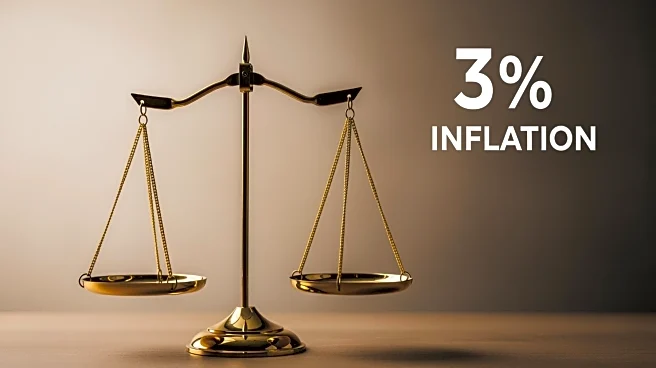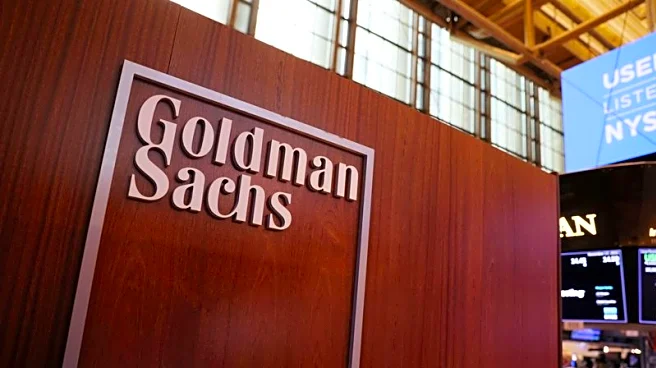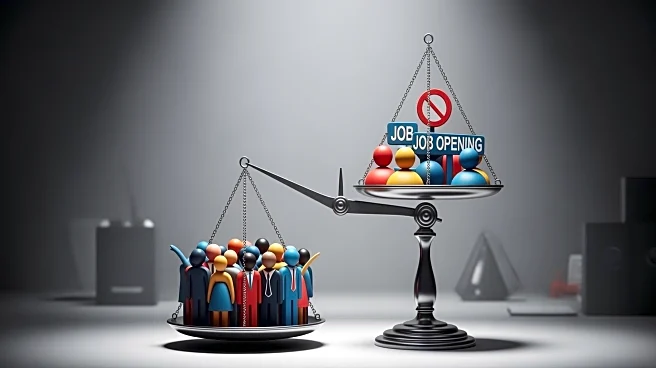What's Happening?
Economists are increasingly concerned about the U.S. job market entering a phase known as 'stall speed,' where job creation slows significantly, potentially leading to a recession. This term, borrowed from aviation, describes a situation where the labor
market weakens to the point that consumer spending decreases, causing businesses to lay off more workers, thus creating a self-reinforcing cycle of job losses. Peter Berezin, chief global strategist at BCA Research, suggests that the U.S. unemployment rate could rise to 6% from the current 4.2% if this cycle begins. Other economists, including those from JPMorgan and Goldman Sachs, have also noted signs of stall speed, citing recent lackluster job data and comments from Federal Reserve Chair Powell about the risk of increased layoffs.
Why It's Important?
The potential onset of stall speed in the job market is significant as it could lead to elevated unemployment rates and a possible recession. This would impact U.S. economic stability, affecting consumer confidence and spending, which are crucial for business growth. If unemployment rises, it could lead to decreased demand for goods and services, further straining businesses and potentially leading to more layoffs. The Federal Reserve may need to adjust interest rates to stimulate hiring, but this could take time to have an effect. The broader economic implications include potential shifts in fiscal policy and increased pressure on social safety nets.
What's Next?
Economists are closely monitoring upcoming economic indicators, including private payroll data and jobless claims, to assess the likelihood of stall speed. The Bureau of Labor Statistics is expected to release revised jobs data, which could provide further insights into the health of the labor market. If the data indicates continued weakness, it may prompt the Federal Reserve to reconsider its interest rate policies to prevent a recession. Businesses and policymakers will need to prepare for potential economic challenges, including increased unemployment and reduced consumer spending.
Beyond the Headlines
The concept of stall speed highlights the interconnectedness of consumer behavior and employment trends. As job creation slows, consumer spending decreases, which can exacerbate economic downturns. This cycle underscores the importance of maintaining a robust labor market to ensure economic stability. Additionally, the potential for stall speed raises questions about the effectiveness of current economic policies and the need for proactive measures to support job growth and prevent recession.














